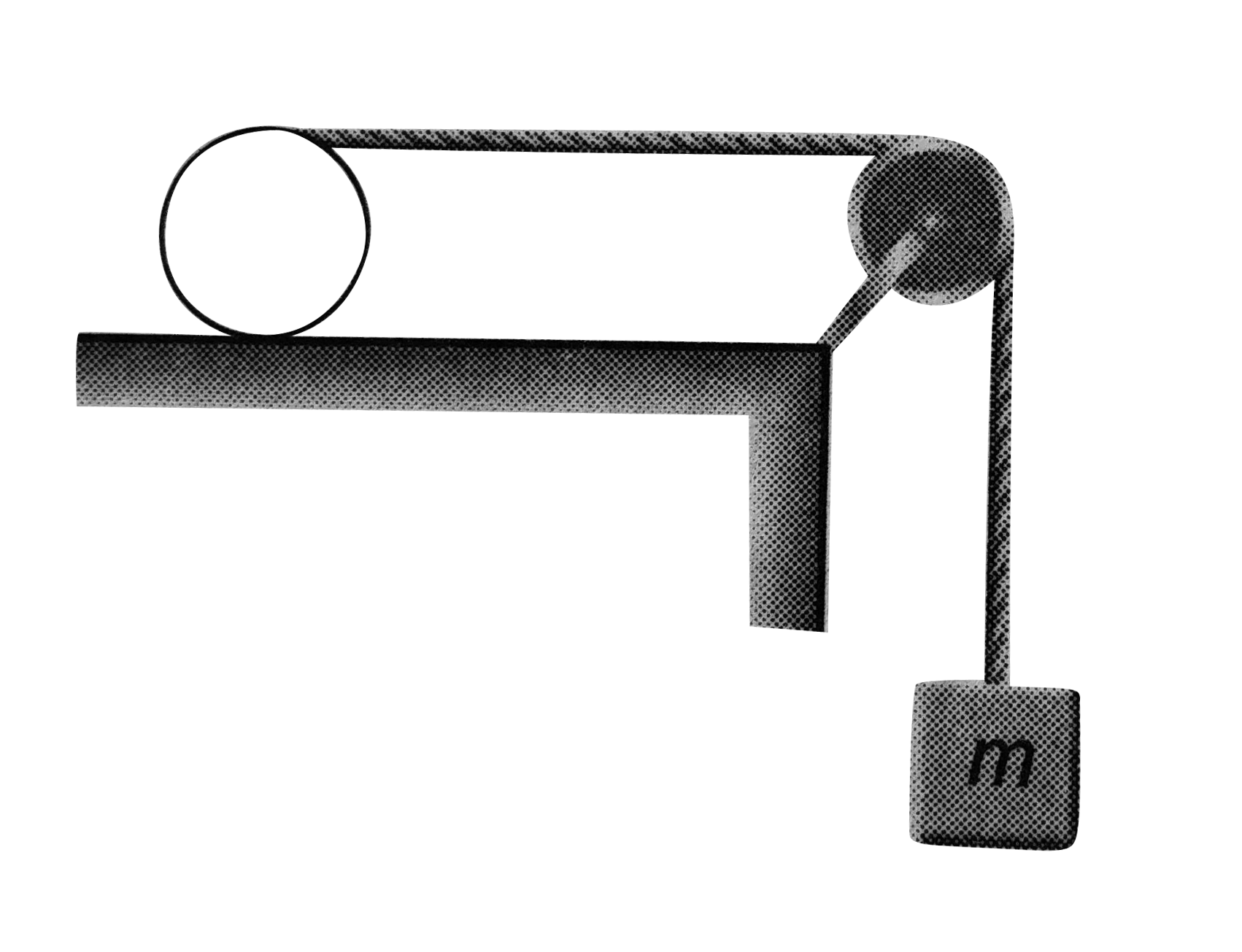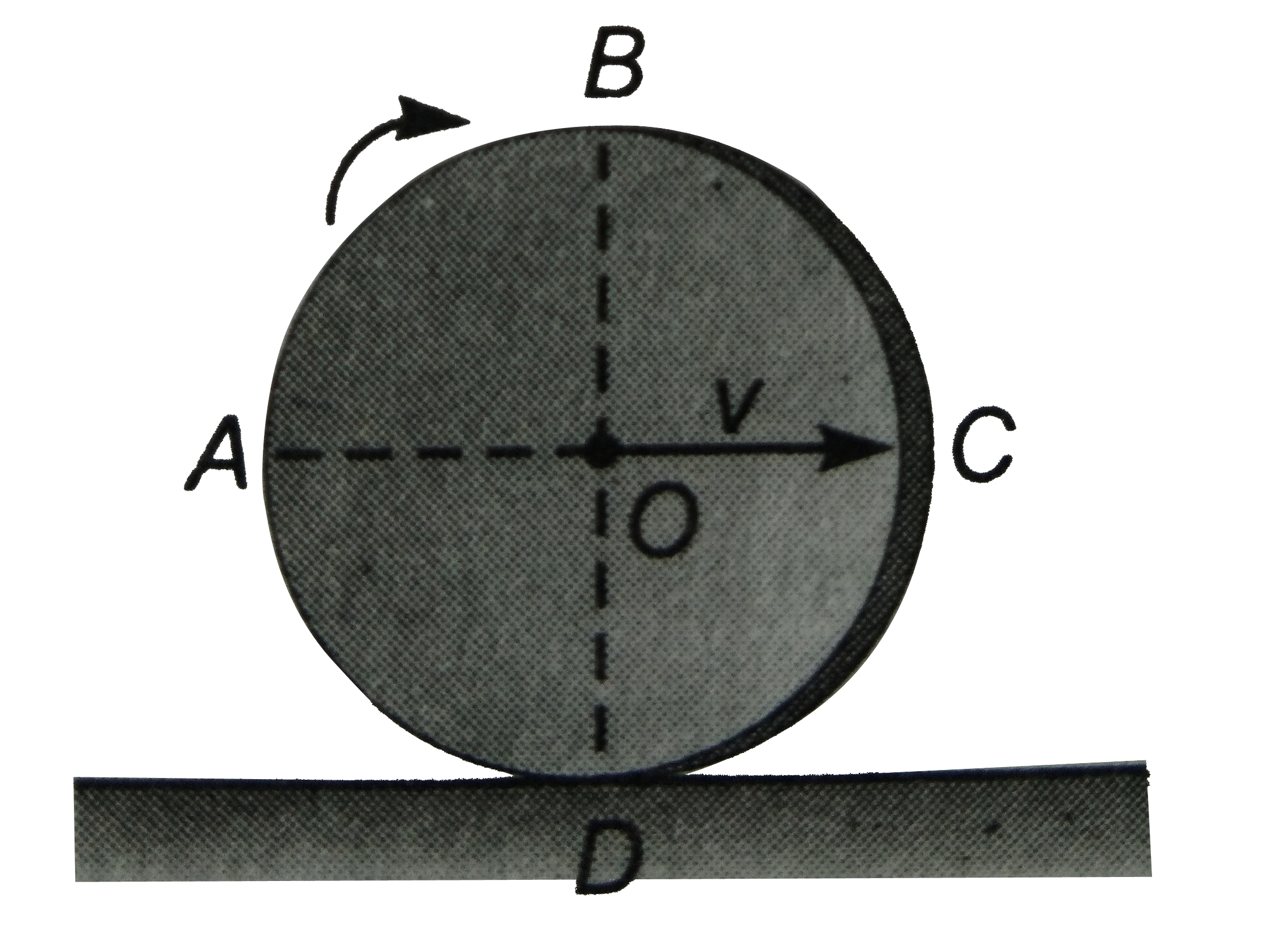Two identical rings are moving with equal kinetic energy One ring rolls without slipping and other ring is in pure translational motion. The ratio of their respective speeds of centre of mass is
1:√2
√2:√3
1:√3
1:1
The correct Answer is:C
To solve the problem of finding the ratio of the speeds of the center of mass of two identical rings moving with equal kinetic energy—one rolling without slipping and the other in pure translational motion—we can follow these steps:
Step 1: Define the Kinetic Energy for Both Cases
For the ring that rolls without slipping, the total kinetic energy (KE) is the sum of its translational kinetic energy and its rotational kinetic energy:
KErolling=12mv2A+12Iω2
Where:
- m is the mass of the ring,
- vA is the speed of the center of mass of the rolling ring,
- I is the moment of inertia of the ring, and
- ω is the angular velocity.
For a ring, the moment of inertia I is given by:
I=mr2
Thus, substituting I into the kinetic energy equation:
KErolling=12mv2A+12(mr2)ω2
Step 2: Relate Angular Velocity and Linear Velocity
For rolling without slipping, the relationship between linear speed and angular speed is:
vA=rω⇒ω=vAr
Substituting this into the kinetic energy equation gives:
KErolling=12mv2A+12(mr2)(vAr)2
This simplifies to:
KErolling=12mv2A+12mv2Ar2r2=12mv2A+12mv2A=mv2A
Step 3: Kinetic Energy for the Translational Ring
For the ring that is in pure translational motion, the kinetic energy is:
KEtranslational=12mv2B
Step 4: Set the Kinetic Energies Equal
Since both rings have equal kinetic energy, we can set their kinetic energy equations equal to each other:
mv2A=12mv2B
Cancelling m from both sides gives:
v2A=12v2B
Step 5: Solve for the Ratio of Speeds
Taking the square root of both sides:
vAvB=√12=1√2
Thus, we can express this as:
vA:vB=1:√2
Step 6: Final Ratio
To express the ratio in a more standard form:
vA:vB=√2:2
However, since the problem asks for the ratio in terms of √2 and √3, we can rewrite:
vA:vB=√2:√3
Conclusion
The ratio of the respective speeds of the center of mass of the two rings is:
Ratio=√2:√3
For the ring that rolls without slipping, the total kinetic energy (KE) is the sum of its translational kinetic energy and its rotational kinetic energy:
KErolling=12mv2A+12Iω2
Where:
- m is the mass of the ring,
- vA is the speed of the center of mass of the rolling ring,
- I is the moment of inertia of the ring, and
- ω is the angular velocity.
I=mr2
Thus, substituting I into the kinetic energy equation:
KErolling=12mv2A+12(mr2)ω2
For rolling without slipping, the relationship between linear speed and angular speed is:
vA=rω⇒ω=vAr
Substituting this into the kinetic energy equation gives:
KErolling=12mv2A+12(mr2)(vAr)2
This simplifies to:
KErolling=12mv2A+12mv2Ar2r2=12mv2A+12mv2A=mv2A
For the ring that is in pure translational motion, the kinetic energy is:
KEtranslational=12mv2B
Since both rings have equal kinetic energy, we can set their kinetic energy equations equal to each other:
mv2A=12mv2B
Cancelling m from both sides gives:
v2A=12v2B
Taking the square root of both sides:
vAvB=√12=1√2
Thus, we can express this as:
vA:vB=1:√2
To express the ratio in a more standard form:
vA:vB=√2:2
However, since the problem asks for the ratio in terms of √2 and √3, we can rewrite:
vA:vB=√2:√3
The ratio of the respective speeds of the center of mass of the two rings is:
Ratio=√2:√3
Similar Questions
A ring is rolling without slipping. The ratio of translational kinetic energy to rotational kinetic energy is
View SolutionA ring rolls without slipping on a horizontal surface. At any instant its position is as shown in the figure.
View SolutionWhen a sphere rolls without slipping the ratio of its kinetic energy of translation to its total kinetic energy is.
View SolutionA disc is rolling on a surface without slipping. What is the ratio of its translational to rotational kinetic energies ?
View SolutionWhen a solid cylinder rolls without slipping the ratio of kinetic energy of translation to its total kinetic energy is
View SolutionA ring is rolling without slipping. Its energy of translation is E. Its total kinetic energy will be :-
View Solution
in the given figure a ring of mass m is kept on a horizontal surface while a body of equal mass m si attached through string, which is wounded on the ring. When the system is released the ring rolls without slipping. consider the following statement and choose the correct options.
(i). Acceleration of centre of mass of ring is 2g3
(ii). acceleration of hanging particle is 4g3
(iii). Frictional force (on the ring) acts in backward direction.
(iv) . Frictional force (on the ring) acts in backward direction.
View Solution
A uniform circular ring rolls without slipping on a horizontal surface. At any instant, its position is as shown in the figure. Then
View SolutionA ring rolls without slipping on the ground. Its centre C moves with a constant speed u.P is any point on the ring. The speed of P with respect to the ground is v.
View SolutionA hollow sphere is rolling without slipping on a rough surface. The ratio of translational kinetic energy to rotational kinetic energy is
View Solution

